ART NEWS:Feb.02
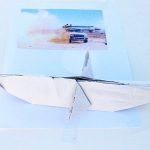 The practice of Katrin Koskaru is about space, landscape, cityscape and atmosphere within it. Architecture is sign of power and she likes to use architecture or its ruins as a tool to understand the space and its history. She is particularly interested in military space. She traces back the past and see how it connects to now.As the artist says for her new exhibition “War Poem”, “The subject matter is very complex and almost overwhelming and I verge between abstraction and representation. The starting point is not abstraction itself but rather architecture. It’s fascinating for me that painting retains its conventionality no matter how serious topic it tries to process. To me painting is a part of mark making and information processing. Soviet avant-garde architecture and aesthetic of Bauhaus school are all part of my influences”. Info: Pascaline Mulliez Gallerie, 42 rue de Montmorency, Paris, Duration: 4/2-2/4/16, Days & Hours: Wed-Sat 11:00-19:00, www.pascalinemulliez.com
The practice of Katrin Koskaru is about space, landscape, cityscape and atmosphere within it. Architecture is sign of power and she likes to use architecture or its ruins as a tool to understand the space and its history. She is particularly interested in military space. She traces back the past and see how it connects to now.As the artist says for her new exhibition “War Poem”, “The subject matter is very complex and almost overwhelming and I verge between abstraction and representation. The starting point is not abstraction itself but rather architecture. It’s fascinating for me that painting retains its conventionality no matter how serious topic it tries to process. To me painting is a part of mark making and information processing. Soviet avant-garde architecture and aesthetic of Bauhaus school are all part of my influences”. Info: Pascaline Mulliez Gallerie, 42 rue de Montmorency, Paris, Duration: 4/2-2/4/16, Days & Hours: Wed-Sat 11:00-19:00, www.pascalinemulliez.com
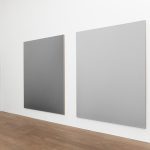 Paul Czerlitzki works with the temporal shift of particles pushing through or getting absorbed by membranes. In his series of white “paintings” he applies layers of paint on the back of the canvas to generate a more or less controlled surface on the front. The paint that bleeds through the fine linen structure allows the viewer to observe changes in the density of particles that made it to the other side. In his “paintings” Czerlitzki denies gesture, leaving the works to ask questions of temporal shift and the function of paint itself. The denial of color focuses the attention towards the differences and nuances in the generated structure, an important aspect that is also present in the monochrome dust pieces. Info: Galerie Laurent Godin, 5, rue du grenier Saint-Lazare, Paris, Duration: 5/2-12/3/16, Days & Hours: Tue-Sat 11:00-19:00, www.laurentgodin.com
Paul Czerlitzki works with the temporal shift of particles pushing through or getting absorbed by membranes. In his series of white “paintings” he applies layers of paint on the back of the canvas to generate a more or less controlled surface on the front. The paint that bleeds through the fine linen structure allows the viewer to observe changes in the density of particles that made it to the other side. In his “paintings” Czerlitzki denies gesture, leaving the works to ask questions of temporal shift and the function of paint itself. The denial of color focuses the attention towards the differences and nuances in the generated structure, an important aspect that is also present in the monochrome dust pieces. Info: Galerie Laurent Godin, 5, rue du grenier Saint-Lazare, Paris, Duration: 5/2-12/3/16, Days & Hours: Tue-Sat 11:00-19:00, www.laurentgodin.com
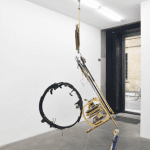 “L’hiver en marcel” is the title of Édouard Nardon’s new exhibition. Nardon’s new body of work explores notions of temporal perspective and confinement. The paintings and sculptures were created in two places : the artist’s studio in New York, and Paris, where several objects have been conceived of off-site to be made in situ. By abstracting motifs and objects into reconfigurations, Nardon’s sculptures formalize the analogies of a prison cell. Nardon accesses penitential austerity and transcends necessity by using the objects desired and imagined by a prisoner, as foundations to propose final structures that are released of their functional substance. The objects that come to fruition are things that exist in the free world, reinvented as behind-bars mutations of themselves, then compressed to the limit of their symbolic power. In the allegorical plane, Nardon draws parallels between the state of captivity and the iconography of the Hanged Man from the Tarot de Marseille. Info: Lily Robert Gallery, 3 rue des Haudriettes, Paris, Duration 6/2-11/3/16, Days & Hours: Tue-Sat 11:00-19:00, Sun 14:00-18:00, http://lilyrobert.com
“L’hiver en marcel” is the title of Édouard Nardon’s new exhibition. Nardon’s new body of work explores notions of temporal perspective and confinement. The paintings and sculptures were created in two places : the artist’s studio in New York, and Paris, where several objects have been conceived of off-site to be made in situ. By abstracting motifs and objects into reconfigurations, Nardon’s sculptures formalize the analogies of a prison cell. Nardon accesses penitential austerity and transcends necessity by using the objects desired and imagined by a prisoner, as foundations to propose final structures that are released of their functional substance. The objects that come to fruition are things that exist in the free world, reinvented as behind-bars mutations of themselves, then compressed to the limit of their symbolic power. In the allegorical plane, Nardon draws parallels between the state of captivity and the iconography of the Hanged Man from the Tarot de Marseille. Info: Lily Robert Gallery, 3 rue des Haudriettes, Paris, Duration 6/2-11/3/16, Days & Hours: Tue-Sat 11:00-19:00, Sun 14:00-18:00, http://lilyrobert.com
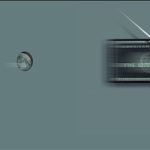 The Azkuna Zentroa exhibition “fluxesfeverfuturesfiction” talks about the present days, our society, and an element which has become the cornerstone to understanding our existence, namely economy. In a capitalist society like ours, economy is present at all times and in all places. Our habits, the way we behave, our presence… are all controlled by and dependent upon it. The artists invited to take part in this exhibition have worked on matters addressed in discourses in the realm of contemporary economics and politics. In their works they analyse and present the personal, affective, bodily, imaginative, or practical dimensions of our live experiences in this present moment. Their international background and their ages, ranging from 30 to 60, are a clear reflection of the present. Info: AZ Azkuna Zentroa, Plaza Arriquibar 4, Bilbao, Duration: 11/2-8/5/16, Days & Hours: Tue-Thu & Sun 11:00-20:00, Fri & Sat 11:00-21:00, www.azkunazentroa.com
The Azkuna Zentroa exhibition “fluxesfeverfuturesfiction” talks about the present days, our society, and an element which has become the cornerstone to understanding our existence, namely economy. In a capitalist society like ours, economy is present at all times and in all places. Our habits, the way we behave, our presence… are all controlled by and dependent upon it. The artists invited to take part in this exhibition have worked on matters addressed in discourses in the realm of contemporary economics and politics. In their works they analyse and present the personal, affective, bodily, imaginative, or practical dimensions of our live experiences in this present moment. Their international background and their ages, ranging from 30 to 60, are a clear reflection of the present. Info: AZ Azkuna Zentroa, Plaza Arriquibar 4, Bilbao, Duration: 11/2-8/5/16, Days & Hours: Tue-Thu & Sun 11:00-20:00, Fri & Sat 11:00-21:00, www.azkunazentroa.com
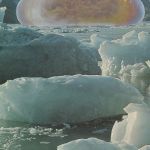 Gathering over a hundred artists, architects and filmmakers, “The tremors of the world” offers a dialogue between ancient and contemporary works. It explores the ambivalent and persisting attraction for the “Nature too far” and catastrophes. At a time of ecological upheavals and alarmist statements, the exhibition also explores two radical changes in the concept of the sublime: the spectator realising his partial responsibility in the disordered world, and the catastrophe itself, now invisible under the effects of our activity. Lastly, the exhibition evokes the resurgence, since the 60’s, of a rekindled bond with nature. An aspiration for re-enchantment, a quest of fusion, reviving a more contemplative iconography of the sublime. Info: Centre Pompidou-Metz, 1 Parvis des Droits de l’Homme, Metz, Duration: 11/2-5/9/16, Days & Hours: Wed-Mon 10:00-18:00, www.centrepompidou-metz.fr
Gathering over a hundred artists, architects and filmmakers, “The tremors of the world” offers a dialogue between ancient and contemporary works. It explores the ambivalent and persisting attraction for the “Nature too far” and catastrophes. At a time of ecological upheavals and alarmist statements, the exhibition also explores two radical changes in the concept of the sublime: the spectator realising his partial responsibility in the disordered world, and the catastrophe itself, now invisible under the effects of our activity. Lastly, the exhibition evokes the resurgence, since the 60’s, of a rekindled bond with nature. An aspiration for re-enchantment, a quest of fusion, reviving a more contemplative iconography of the sublime. Info: Centre Pompidou-Metz, 1 Parvis des Droits de l’Homme, Metz, Duration: 11/2-5/9/16, Days & Hours: Wed-Mon 10:00-18:00, www.centrepompidou-metz.fr
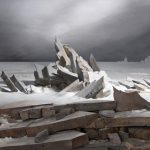 The photographic works of James Casebere explore architectural subjects such as domestic settings, flooded corridors of grand mansions, bare spaces of prison interiors, Moorish and Islamic architecture, ancient water tunnels in Bologna, or the Jewish Ghetto in Venice. With more than 70 works, the exhibition “Fugitive”, presents images drawn from all periods of the artist’s career. The survey includes recent large multi-panel and single-panel color photographic works, early black-and-white gelatin silver prints, dye destruction prints, waterless lithographs, and Polaroid prints. In addition, for the first time, Casebere shows working notebooks, a series of collages, and an extensive collection of never before exhibited Polaroid studies of individual works as they change through varied stages of production to the finished single image. Info: Haus der Kunst, Prinzregentenstrasse 1, Munich, Duration: 12/2-12/6/16, Days & Hours: Mon-Wed & Fri-Sun 10:00-20:00, Thu 10:00-22:00, www.hausderkunst.de
The photographic works of James Casebere explore architectural subjects such as domestic settings, flooded corridors of grand mansions, bare spaces of prison interiors, Moorish and Islamic architecture, ancient water tunnels in Bologna, or the Jewish Ghetto in Venice. With more than 70 works, the exhibition “Fugitive”, presents images drawn from all periods of the artist’s career. The survey includes recent large multi-panel and single-panel color photographic works, early black-and-white gelatin silver prints, dye destruction prints, waterless lithographs, and Polaroid prints. In addition, for the first time, Casebere shows working notebooks, a series of collages, and an extensive collection of never before exhibited Polaroid studies of individual works as they change through varied stages of production to the finished single image. Info: Haus der Kunst, Prinzregentenstrasse 1, Munich, Duration: 12/2-12/6/16, Days & Hours: Mon-Wed & Fri-Sun 10:00-20:00, Thu 10:00-22:00, www.hausderkunst.de
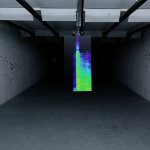 “Earshot” is Lawrence Abu Hamdan’s first solo exhibition in Germany. In his art and research, Abu Hamdan, who lives in Beirut, explores the perception of language and sound and the politics of listening. In May 2014, Israeli soldiers in the occupied West Bank (Palestine) shot and killed two teenagers. Forensic Architecture worked with Abu Hamdan to investigate the incident. A detailed acoustic analysis, for which Abu Hamdan used special techniques designed to visualize the sound frequencies, established that they had fired live rounds, and moreover had tried to disguise these fatal shots to make them sound as if they were rubber bullets. Expanding on the original body of evidence, he has created an installation encompassing sound, photographic prints, and a video to reflect more broadly on the aesthetics of evidence and the politics of sound and silence. Info: Portikus, Alte Brücke, Maininsel, Frankfurt, Duration: 13/2-10/4/16, Days & Hours: Tue & Thu-Sun 11:00-18:00, Wed 11:00-20:00, www.portikus.de
“Earshot” is Lawrence Abu Hamdan’s first solo exhibition in Germany. In his art and research, Abu Hamdan, who lives in Beirut, explores the perception of language and sound and the politics of listening. In May 2014, Israeli soldiers in the occupied West Bank (Palestine) shot and killed two teenagers. Forensic Architecture worked with Abu Hamdan to investigate the incident. A detailed acoustic analysis, for which Abu Hamdan used special techniques designed to visualize the sound frequencies, established that they had fired live rounds, and moreover had tried to disguise these fatal shots to make them sound as if they were rubber bullets. Expanding on the original body of evidence, he has created an installation encompassing sound, photographic prints, and a video to reflect more broadly on the aesthetics of evidence and the politics of sound and silence. Info: Portikus, Alte Brücke, Maininsel, Frankfurt, Duration: 13/2-10/4/16, Days & Hours: Tue & Thu-Sun 11:00-18:00, Wed 11:00-20:00, www.portikus.de
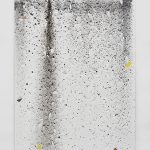 Thomas Fougeirol’s playground is the surface of the painting and, having many years ago rid himself of the painter’s traditional tools, he envisages the act of painting and his contact with the canvas through the intermediary of imprints using pieces of fabrics and metal grids etc. Comparable from an aesthetic point of view to the walls (or floor) of the studio, these paintings are like the resurgence of a de-structured pictural narrative. Seen from a distance, the canvasses seem to be photographic, or even proto-photographic experiments, images of materials or views of the ground. They have lost their materiality, which is replaced by a flatness that contradicts any notion of texturology. Info: Praz-Delavallade Gallery, 5 rue des Haudriettes, Paris, Duration: 13/2-26/3/16, Days & Hours: Tue-Sat 11:00-19:00, www.praz-delavallade.com
Thomas Fougeirol’s playground is the surface of the painting and, having many years ago rid himself of the painter’s traditional tools, he envisages the act of painting and his contact with the canvas through the intermediary of imprints using pieces of fabrics and metal grids etc. Comparable from an aesthetic point of view to the walls (or floor) of the studio, these paintings are like the resurgence of a de-structured pictural narrative. Seen from a distance, the canvasses seem to be photographic, or even proto-photographic experiments, images of materials or views of the ground. They have lost their materiality, which is replaced by a flatness that contradicts any notion of texturology. Info: Praz-Delavallade Gallery, 5 rue des Haudriettes, Paris, Duration: 13/2-26/3/16, Days & Hours: Tue-Sat 11:00-19:00, www.praz-delavallade.com
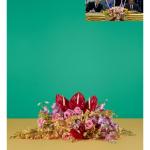 “Paperwork and the Will of Capital” is a new series of large-scale photographs and unique sculptures by Taryn Simon. A prodigious storyteller of hard-hitting facts using image and text, Simon’s research-oriented art practice has yielded such impactful bodies of work. Simon takes the richest and most sophisticated aspects of empirical photography into the field of post-conceptual photographic practice, while embracing the highest formal and technical standards of the medium. In considering topics of political immediacy–wrongful conviction, heredity, state secrecy, and the porosity of international borders, to name just a few–she addresses the rhetorical nature of the image within her chosen topic, producing works that are as much about the radical potential of images as they are about their limits. Info: Gagosian Gallery, 555 West 24th Street, New York, Duration 18/2-26/3/16, Days & Hours: Tue-Sat 10:00-18:00, www.gagosian.com
“Paperwork and the Will of Capital” is a new series of large-scale photographs and unique sculptures by Taryn Simon. A prodigious storyteller of hard-hitting facts using image and text, Simon’s research-oriented art practice has yielded such impactful bodies of work. Simon takes the richest and most sophisticated aspects of empirical photography into the field of post-conceptual photographic practice, while embracing the highest formal and technical standards of the medium. In considering topics of political immediacy–wrongful conviction, heredity, state secrecy, and the porosity of international borders, to name just a few–she addresses the rhetorical nature of the image within her chosen topic, producing works that are as much about the radical potential of images as they are about their limits. Info: Gagosian Gallery, 555 West 24th Street, New York, Duration 18/2-26/3/16, Days & Hours: Tue-Sat 10:00-18:00, www.gagosian.com
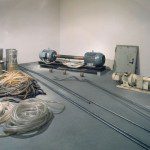 What does life consist of? This question is at the heart of Moderna Museet’s major group exhibition. Despite countless attempts of scientists and philosophers, no one seems to have come up with a satisfactory definition, not even with the aid of today’s advanced theories on complex systems. On the contrary, the astounding potential of synthetic biology has, if anything, added to the sense of uncertainty. The exhibition “Life Itself” is an attempt to approach this question through art, if only to confront our inability to find satisfactory answers. The exhibition covers a period from the early 20th Century, when artists developed a dialogue with the new theories on evolution, over a number of modernists, to today’s artists whose works are created in a technologically manipulated reality. Info: Curators: Daniel Birnbaum, Carsten Höller & Jo Widoff, Moderna Museet, Skeppsholmen, Stockholm, Duration: 20/2-8/5/16, Days & Hours: Tue & Fri 10:00-20:00, Wed-Thu & Sat-Sun 10:00-18:00, www.modernamuseet.se
What does life consist of? This question is at the heart of Moderna Museet’s major group exhibition. Despite countless attempts of scientists and philosophers, no one seems to have come up with a satisfactory definition, not even with the aid of today’s advanced theories on complex systems. On the contrary, the astounding potential of synthetic biology has, if anything, added to the sense of uncertainty. The exhibition “Life Itself” is an attempt to approach this question through art, if only to confront our inability to find satisfactory answers. The exhibition covers a period from the early 20th Century, when artists developed a dialogue with the new theories on evolution, over a number of modernists, to today’s artists whose works are created in a technologically manipulated reality. Info: Curators: Daniel Birnbaum, Carsten Höller & Jo Widoff, Moderna Museet, Skeppsholmen, Stockholm, Duration: 20/2-8/5/16, Days & Hours: Tue & Fri 10:00-20:00, Wed-Thu & Sat-Sun 10:00-18:00, www.modernamuseet.se
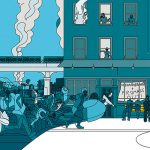 The exhibition “Who Owns The Street?” shows different ways of seeing the street, our public space. Who uses this public space? Who manages, controls and abuses it? Who is the owner and what responsibilities does this ownership entail? The Van Abbemuseum has invited four guests who each worked on a particular aspect of the use of public space. This has resulted in four very different contributions: public space as a place for protest, a classification of a hundred different streets, the design of the public space in The Strip in Las Vegas and the project Refugee Republic about daily life in a refugee camp. All the contributions also refer to the legendary exhibition “The Street” which took place in the Van Abbemuseum in 1972. Info: Curator: Willem Jan Renders, Van Abbemuseum, Bilderdijklaan 10, Eindhoven, Duration: 20/2-30/4/16, Days & Hours: Tue-Wed & Fri-Sun 11:00-17:00, Thu 11:00-21:00, http://vanabbemuseum.nl
The exhibition “Who Owns The Street?” shows different ways of seeing the street, our public space. Who uses this public space? Who manages, controls and abuses it? Who is the owner and what responsibilities does this ownership entail? The Van Abbemuseum has invited four guests who each worked on a particular aspect of the use of public space. This has resulted in four very different contributions: public space as a place for protest, a classification of a hundred different streets, the design of the public space in The Strip in Las Vegas and the project Refugee Republic about daily life in a refugee camp. All the contributions also refer to the legendary exhibition “The Street” which took place in the Van Abbemuseum in 1972. Info: Curator: Willem Jan Renders, Van Abbemuseum, Bilderdijklaan 10, Eindhoven, Duration: 20/2-30/4/16, Days & Hours: Tue-Wed & Fri-Sun 11:00-17:00, Thu 11:00-21:00, http://vanabbemuseum.nl
